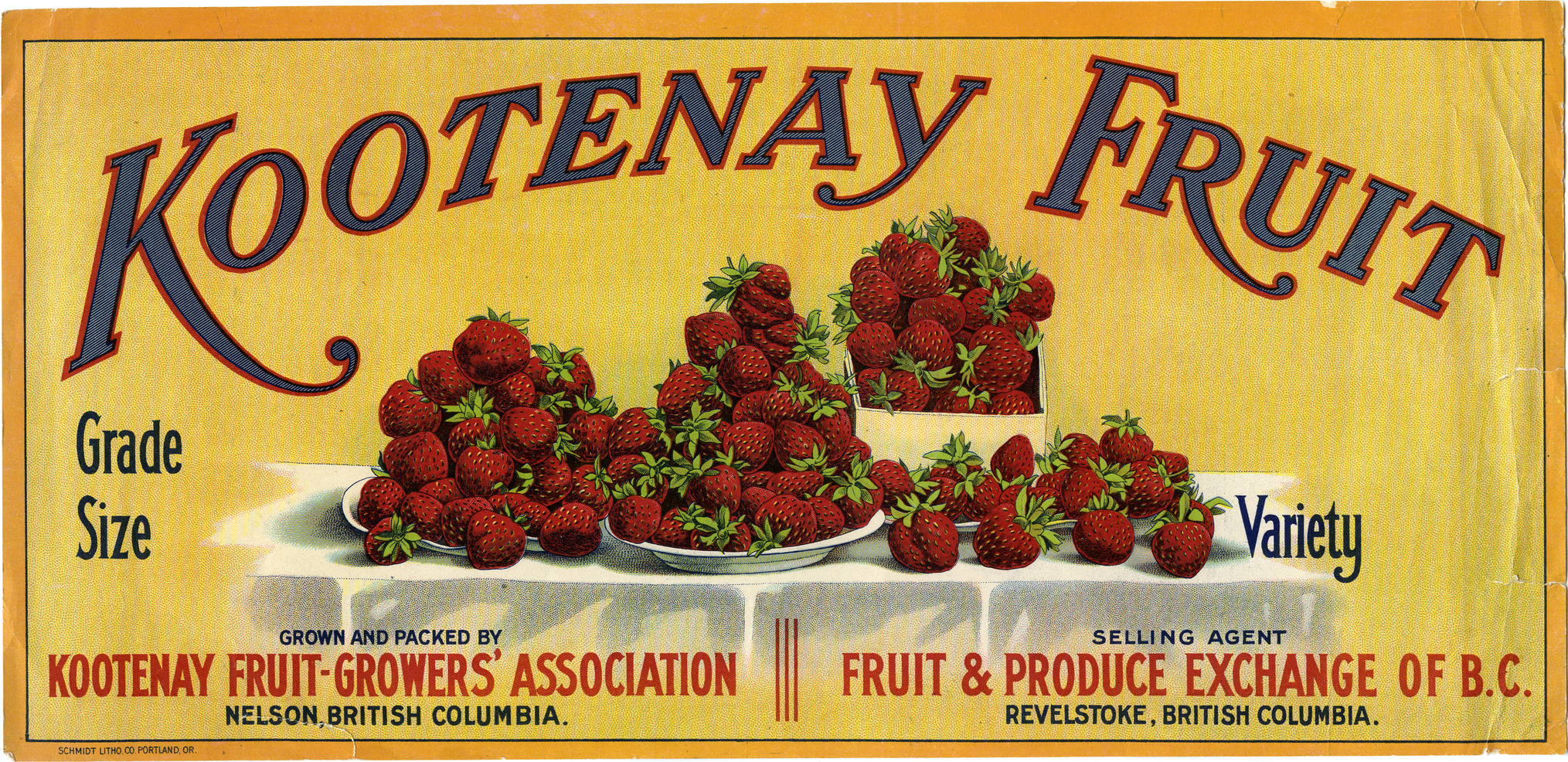Fruit growing in the West Kootenays flourished from 1910 to 1930. Many successful orchards blossomed around the region, and Kootenay fruit won prizes at exhibitions around the world. 18
United by their shared objective to master the art of fruit growing and to ultimately survive, orcharding communities sprung up along the lake. A general sense of cooperation and camaraderie prevailed throughout the neighbourhoods, as ranchers learned and passed on the knowledge of how to best clear, plant, and tend to their orchards.
On January 19, 1904, the Kootenay Fruit Growers’ Association was formed to “unite the fruit growers of the city and district, and all those interested in the trade into an association for mutual benefit and protection.” 19 The coalition was instigated by James Johnstone who became the first president of the association.

In 1912, farmers residing in the Procter, Balfour area formed their own institute “to benefit all their members with up-to-date information on fruit growing and mixed farming.” 20 Additionally, the orchardists of Queens Bay “formed the Queens Bay Fruit Growers Association around 1912 with Mr. W.H. Foster as one of the first secretaries.” 21 In 1920, Harrop formed a Fruit Growers Co-operative Association, which members paid a fee to be a part of. 22
The community fruit growers associations sprung from a need to systemize and control the packing and marketing of an increasing volume of fruit. The associations organized the construction of packing sheds that were built by volunteers and financed by loans from the Department of Agriculture. 22
By 1922, “the newly named Queens Bay Co-Operative & Packing Shed had their own shed at the head of the wharf at the north end of the bay.” 21 Soon, many of “these square-shaped, gable-roofed packing sheds dotted the lakeshore near the ranching communities, always near the…wharves.” 22
In the industrial sections of the sheds, the fruit was received, culled, graded, packed, loaded and shipped. Many also served as storage facilities. When not in use, the packing sheds became community centres that hosted a variety of social functions, including: “balls, dances, community concerts, family gatherings and wedding showers.” 23
18. Lang, Lost Orchards
19. The Daily News, Wednesday, January 20, 1904
20. Thompson, Kootenay Outlet Reflections, 174
21. Kootenay Outlet Reflections, 497-498
22. Lang, Lost Orchards, 50
23. Soles, Kootenay Outlet Reflections, 300
